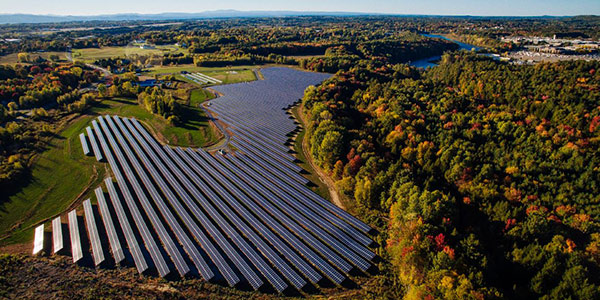By Michael Kuser
FERC on Thursday accepted changes to the New England Transmission Owners’ (NETOs) interconnection study deadlines and the scope of their feasibility studies (ER19-1952).
However, the commission only partially accepted a separate Order 845/845-A compliance filing by ISO-NE and NETOs to reflect the orders’ changes to the commission’s pro forma large generator interconnection agreement (LGIA) and large generator interconnection procedures (LGIP), ordering a further compliance filing within 120 days (ER19-1951).
Renewable developers EDF Renewables, E.ON Climate & Renewables N.A. and Enel Green Power N.A. had argued that the revised deadlines — extending the feasibility study from 45 to 90 days and the system impact study (SIS) from 90 to 270 days — are unreasonably ambitious. They noted ISO-NE’s severe backlog, with feasibility studies averaging 229 days and SIS averaging 443 days.
But the commission said it expects “that the average study lengths will drop due to the reduced scope of the feasibility study and due to the other interconnection process improvements,” citing expanded use of consultants and a streamlined approach for managing SIS models and data.
Under the previous rules, many interconnection customers that chose the separate feasibility study later modified their projects before the SIS, reducing the time savings from conducting the feasibility study first. The new rules eliminate the option to integrate the feasibility study within the SIS and allow customers to forgo the feasibility study. Feasibility studies will be reduced to a limited power flow analysis, instead of the full power flow analysis allowed previously.
Regarding the LGIP filing, the commission found that it proposed, “without justification, language that differs in one respect from the commission’s requirements related to the process for analyzing surplus interconnection service requests.”
The filing parties explained in their transmittal letter (but did not specify in proposed Tariff revisions) that ISO-NE would limit the analysis it performs to its existing 10-business-day material modification framework for accommodating technological changes. The commission said it “may be inadequate to complete the evaluation required under Order No. 845.”
The commission required a further compliance filing to address the stand-alone network upgrades definition; interconnection customers’ ability to exercise the option to build; NETOs’ proposal to recover actual costs rather than a negotiated amount for oversight costs related to the option to build; the method for determining contingent facilities; requests for interconnection service below generating facility capacity; provisional interconnection service; and both the process and definition for surplus interconnection service.
FERC Partially Accepts Emera Maine Filing
FERC on Thursday also accepted amendments to Emera Maine’s LGIA and LGIP but ordered a further compliance filing within 120 days (ER19-1887).
The commission found that the revised dispute resolution procedures in the company’s LGIP comply with Orders 845/845-A and that the variations are “consistent with or superior” to them. “However, the deadlines in Emera Maine’s proposed dispute resolution timeline contain an apparent incongruity,” the commission said, ordering a further compliance filing to address a five-day discrepancy in stated terms.
The commission found that the LGIP’s method for determining contingent facilities is in partial compliance but that proposed criteria for identifying contingent facilities “lack the requisite transparency.” It ordered the company to describe the specific technical screens, analyses, triggering thresholds or criteria it will use to identify such facilities.
The commission also ordered further compliance filings to incorporate pro forma revisions to section 3.1 of its LGIP; to revise section 4.4.6 to clarify how it will assess changes to a generating facility’s technical specifications; to clarify the deposit amount the interconnection customer is required to tender; and to specify that Emera Maine will complete its assessment and determination of whether a proposed technological change is a material modification within 30 days of an interconnection customer submitting a technological change request.




